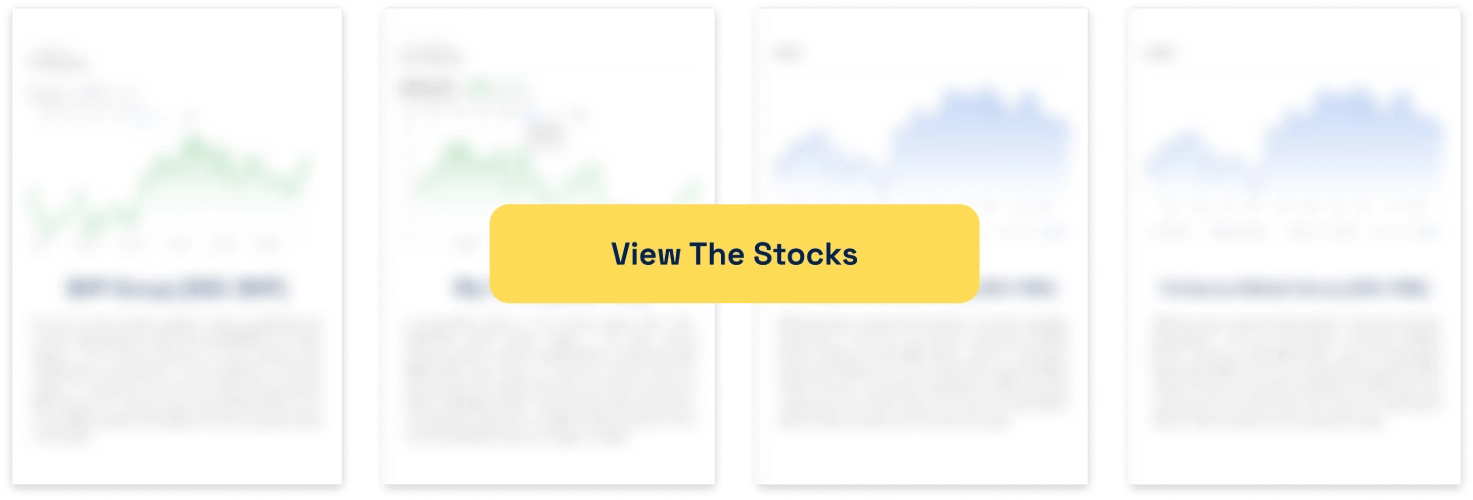Here are 6 of the best mergers and acquisitions on the ASX and 6 of the worst deals!
![]() Nick Sundich, April 28, 2025
Nick Sundich, April 28, 2025
Mergers and acquisitions on the ASX happen all the time. From the perspective of the company being bought out, they will often be content with the cash, but may occasionally perceive that they could make more cash by ‘fighting the good fight’ themselves.
From the buyer’s perspective, it is always a case of ‘caveat emptor’, buyer beware! Some deals can be game-changing! But in other instances, deals can be to their detriment and the management is left egg-faced. Let’s take a look at 6 examples of the former, and 6 of the latter.
Before we begin, we are only including deals where the ‘buyer’ was an ASX-listed company (or companies), but not excluding sellers on the question of whether they were listed or not. We are not including deals like Afterpay and Westfield where the buyer was a foreign entity that either took it off the ASX altogether or just took over the listing as its own – as happened in those instances.
And finally, we are not including deals proposed but that never went ahead. Otherwise, there’d be plenty of them here such as Gina Rinehart not buying Liontown and AGL saying no to being taken over by Brookfield and Mike Cannon-Brookes. With all this out of the way…
6 of the best mergers and acquisitions on the ASX
Pro Medicus buying Visage
A US$3.5m/A$4.5m deal done in the depths of the GFC had led to Pro Medicus (ASX:PME) growing its market cap to US$13.9bn/A$21.8bn today. Pro Medicus bought out this US radiology software company that allowed customers to transfer, view and analyse imaging data. Sounds obvious now, but it was revolutionary at the time, and even now is more complicated than you might think given they take up a lot of data and can take time to download. PME still has a small share of the market, but has very high margins and a list of high-profile customers with long-term contracts.
Ramsay buying Affinity
Still in the 2000s, Ramsay Healthcare (ASX:RHC) bought Affinity Healthcare in 2005 for $1.4bn (worth $2.33bn in today’s money). At that time, Ramsay was the second largest player and wanted to be number one – what better way to do that than buying out your competitor? Ramsay has been struggling of late, down 60% since early 2022. Even so, it is still capped at $7.7bn, and the deal did lead to >1000% share price growth in the decade after the deal.
Westpac buying St George
In 2008, Westpac bought St George for $17.6bn. After 17 years of letting it operate with its own brand under the Westpac umbrella, the days may be numbered if Project Aries has anything to say about it. You could argue the deal was a failure as Westpac has vastly reduced its network from the 400 it had in 2008 – now there aren’t even 90 between St George, BankSA and Bank of Melbourne.
But it is easy to forget the immediate impact of the deal because it was a while ago now. Westpac’s merger with St George gave it a significant boost in the mortgage market which lasts to this day – it is neck and neck with CBA as the largest mortgage provider of all Australian banks.
Worley and Parsons
It is easy to forget this deal took place since WorleyParsons was just named Worley in 2019 following the acquisition of Jacobs’. But this 2004 deal was a big one. Despite only being worth $350m, representing a 6.9x EBITDA multiple, both entities provided engineering, procurement and project management services to oil, gas, petrochemical and power companies. The pair of companies had some working relationships but opted to formally join forces, putting them in a better position to secure long-term, integrated services contracts.
Shares skyrocketed over 1200% over the next 4 years until the GFC sent them down, but even bottoming out at just over $12 per share, triple the mid-2004 share price of under $4. After nearly going bust in the mid-2010s when energy prices were low, it is up 76% in the last 5 years and is capped at $6.4bn.
Sigma Healthcare and Chemist Warehouse
Onto more recent deals now, Chemist Warehouse had wanted to list on the ASX for years. Nonetheless, with equity capital markets enduring a difficult few of years, the company’s executives thought it easier to list via merging with Sigma which was already listed. The proposed deal is not quite a merger of equals, as Chemist Warehouse would own over 85% of the new entity.
Sigma Healthcare was already Australia’s leading Pharmacy network with a wholesale and distribution chain that delivers to pharmacies, particularly those operating as franchisees such as Amcal +, Discount Drug Stores, PharmaSave and Guardian. Now it is also has the largest franchise.
BHP and Woodside
In mid-2022, Woodside acquired BHP’s petroleum business. It was a win-win for both sides, enabling BHP to get out of oil and gas, thus adding some momentum to the argument it wanted to make that it was part of the decarbonisation solution rather than a problem. For Woodside, it made it a top 10 independent energy company by production with the addition of Bass Strait, Macedon and Pyrenees. And BHP shareholders got shares in Woodside as part of the deal.
6 of the worst mergers and acquisitions on the ASX
Wesfarmers buying Homebase
One analyst – Patrick O’Brien from GlobalData – said this deal was ‘the most disastrous retail acquisition in the UK ever’, and it is hard to disagree with him considering Wesfarmers paid A$700m or £340m, only to sell it 2 years later for £1. Not that is not a typo, not £1m or even £1k, but just £1. Wesfarmers, best known as the owner of Bunnings, wanted to replicate the great Australian delicacy in the UK market but got conquered worse than any Australian cricket team ever would.
This was for many reasons including making big cuts to senior and middle management, and jettisoning the home furnishings offering that was a big draw for female shoppers and thinking Aussie outdoor BBQs would be appealing for people living in the climate of the Old Dart. The chain was bought by Hilco and this stint lasted 6 years until it was placed into administration in late 2024. The brand, website and about 4 dozen stores were bought by CDS.
Perpetual taking over Pendal
Just 2 years after Perpetual bought Pendal for $2bn, it wrote down $547m off its value. This is just the tip of the iceberg with a high exodus of investors and time wasted to get the deal through. Perpetual financed the $757m cash component of the deal with debt finance.
The reality is that it is a difficult time to be in funds management with low-cost passive management the vogue of the moment. Active management is only viable when it extensively outperforms, and that has hardly been the case with Pendal managed funds, with them pulling $8bn in 6 months from J O Hambro alone. And just to think that if only Perpetual walked away from the deal, it could’ve been bought for $1.7bn by a BPEA-Regal consortium. Its a little late for ‘could haves’ of course.
M2 taking over Vocus
Nearly a decade ago now, low-cost telco M2 Group and corporate telco service provider Vocus merged in a $3bn deal, hoping to use their market power as a newly merged entity to get better supply deals. Within less than 3 years, the CEO hired straight after the merger (Geoff Horth) departed, right as the company downgraded its guidance due to headwinds in its consumer division – not for the first time since the merger.
Slater & Gordon buying Quindell
Write downs are one way to tell a merger or acquisition has gone wrong. Another way is when the buyer is suing the seller. And Slater & Gordon did just that the next calendar year after buying Quindell in 2015. Not long after the deal was sealed, it was under investigation and had to restate its accounts which led to a £107m profit becoming a £64m loss and £380m in revenues becoming £247m. Slater and Gordon booked a $1bn impairment, all showing up in its bottom line. Ultimately, the case settled in 2019 for the grand sum of £11m, less than 2% of what it paid. Yipee.
Rio Tinto buying Riversdale
The court system was involved in this case too, but here it was the buyer that was under investigation. Rio bought this company, a Mozambique coal aspirant, that thought could produce 30 million tonnes of coal per year by 2020. It paid US$3.7bn in 2011. Within months, the value was cut by US$2.1bn after it emerged that barging capacity could be no more than 10 million tonnes per year. Month after that, it emerged that its coal resources were way lower than Riversale claimed, and even Rio’s due diligence team found…but this was hidden from shareholders.
Whilst behind the scenes, the team found a negative NPV of US$680m under the best potential configurations, it still said the fields were ‘world class’. But it couldn’t hide things forever. In January 2013, it announced a US$3bn impairment against Riversdale, and CEO Tom Albanese was shown the door. In October 2014, it sold Riversdale for just US$50m. In October 2017, the SEC launched a legal investigation that ended with Rio paying US$28m without admitting or denying the allegations. Our ASIC investigated Rio as well, but fined it only A$750,000 for a single continuous disclosure breach.
Boral buying Headwaters
The AFR’s Chanticleer column wrote about this deal in 2020, suggesting that fund managers believed this US$3.5bn business was only bought ‘so former CEO Mike Kane could justify living in Florida’. Less than 4 years earlier, it was bought for over $3bn, $2bn of which was fresh equity. Boral’s intent in wanting to diversify earnings and become less capital intensive was admirable, the promised synergy benefits of $100m icing on the cake.
But bad management of the US business, combined with good management of competitors, along with bad weather in the US and changing customer preferences led to this deal being one of the worst.
What are the Best ASX Stocks to invest in?
Check our buy/sell tips
Blog Categories
Get Our Top 5 ASX Stocks for FY25
Recent Posts
As the backlash towards James Hardie continues, the company has broken its silence
There’s been a backlash towards James Hardie in the past few weeks that has nothing to do with its tortured…
Liontown Resources (ASX:LTR): Have collapsed lithium prices sent the one-time market darling from spectacular riches to rags?
We’ve all heard the saying ‘rags to riches’ and when Liontown Resources (ASX:LTR) found Kathleen Valley, it was the perfect…
Trump vs. Jerome Powell: What Happens to the Market If Powell Is Fired?
The relationship between President Donald Trump and Federal Reserve Chair Jerome Powell has often been tumultuous, particularly around decisions regarding…



